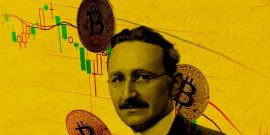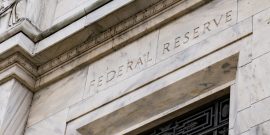Capitalism and Freedom: A Poor Part Won Out
Did Friedman Give the Slip to “Money Mischief”?
In the preface to the twenty-year anniversary (1982) edition of Capitalism and Freedom, Milton Friedman had reason to gloat. He got to point out that since its publication in 1962, the book had sold 400,000 copies despite not getting reviewed, as Friedman put it, “by any national publication—not by the New York Times…or by Time or Newsweek,” the latter having sponsored beginning in 1966, on the strength of Capitalism and Freedom, an immensely popular column of Friedman’s. Friedman also could observe that by the time his next magnum opus had rolled around (1980’s Free to Choose, co-authored with his wife Rose), it was already set up on publication with a television deal and the expectation of huge print runs.
In 1982, in addition, Ronald Reagan was president of the United States and Margaret Thatcher prime minister of the United Kingdom, with Friedman advising the former in an official capacity. It was fairly clear at that point that the principles and recommendations of Capitalism and Freedom stood an excellent chance of being realized in policy and practice over a good portion of the developed world.
And yet it remains true that today, even given the free-market revolution that swept through the advanced world a generation and some ago, there are not too many concrete things in Capitalism and Freedom that one can identify as normative. Indeed, the most commonly cited “victory” of Capitalism and Freedom is the institution of an all-volunteer military in the United States, and that achievement dates from quite early on, 1973.
Now to be sure, many things have moderated in the direction indicated by Capitalism and Freedom a half a century ago. There has been a considerable degree of trade liberalization across the globe since the 1980s; the progressive income tax got cut down such that since 1987, 40% is the closest we in the United States have come to the top rate that prevailed in 1962 of 91%; and there has been a round of welfare reform. But some signature items still seem a universe away, above all the cause to which the Friedmans dedicated their last years: voucher-led school reform.
There is one item in Capitalism and Freedom, however, that has had a rather splendid career since shortly after the book came out, and the results have been at best ambiguous. This concerns the very center of the Friedman expertise: monetary arrangements. Two chapters of the book, those on “The Control of Money” and “International Trade Arrangements,” go over policy reforms that by and large have been adopted. We can see, and not altogether to our pleasure, where we have been led by them.
Certainly, Friedman did not get his wish in “The Control of Money” chapter such that “I would specify that the Reserve System shall see to it that the total stock of money so defined rises month by month…at an annual rate of X percent, where X is some number between 3 and 5.” But in the 1980s and 1990s, it did become a rage in monetary policy circles, particularly in the Federal Reserve of the United States, to adhere to the central tenet of that chapter, which was for central banks to specify and follow a “rule” for monetary policy, instead of leaving things up to discretion.
The “Great Moderation” in economic performance that the United States enjoyed from 1982 to 2007, where yearly GDP growth was good (about the same as it had been in the generation after World War II), but with demonstrably less quarterly variation, is by and large understood to correlate to the Fed’s adoption of rule-like behavior, in particular its adherence in the 1990s to the “Taylor Rule.” Named after Stanford economist John B. Taylor, the Taylor Rule basically says that the Fed should watch the price level and tighten and loosen with an eye to keeping that level nearly flat. Friedman did not prefer price-level targeting in “The Control of Money.” But the larger point was in favor of rule-based monetary policy, and one should say that the salutary results that came from following this lead were for some time quite palpable.
Things are not so rosy when it comes to the success of Friedman’s recommendations for the international monetary system. For it is quite possible that absent Friedman’s strenuous efforts, fully on display in Capitalism and Freedom, for the dismantling and packing off of the international gold standard, its former advocates would not have dispatched it to the grave so comprehensively in the early 1970s, with results that have only given the world economy an air of general crisis since.
As the “International Trade Arrangements” chapter spelled out, “The U.S. should announce that it no longer commits itself to buy gold at any fixed price;” “The U.S. should announce that it will not proclaim any official exchange rates between the dollar and any other currencies….These would be determined in free markets;” and “Other nations might choose to peg their currencies to the dollar. That is their business….” All of these things happened in the early 1970s, first when the U.S. went off gold in 1971, then when the fixed exchange rate system blew up in 1973, and then when a few brave souls (eventually and most famously China) insisted on a peg to the dollar despite it all.
We need not remind ourselves, surely, that inflation took off like a rocket globally, and particularly in the United States, in the wake of these events. Friedman’s old dictum that “inflation is always and everywhere a monetary phenomenon” took on almost comic piquancy in that the abolition of the control which was gold convertibility gave central banks the go-ahead to print money with abandon. In turn, the prices of commodities, particularly gold, shot up beyond belief (gold went up 23-fold in the decade after 1971), indicating that a new cost had been imposed on the world economy. There needed to be some asset class (commodities) where one could hide in the event of the decimation of the very medium of exchange.
Now again, Friedman wanted there to be a two-step process whereby gold and fixed rates were abandoned and rule-based money stock growth was implemented. But in arguing so strenuously for the former, and perhaps not as audibly for the latter, Friedman advanced the process whereby we got the stagflationary 1970s. Indeed, it was once said by economics Nobel Prizewinner Robert A. Mundell (a colleague and interlocutor of Friedman’s at the University of Chicago) that it was an “alliance made in hell” that did away with gold and fixed rates. This functional alliance was between Friedman, whose “free-market” sensitivities were offended by the limitations of convertibility and fixed rates, and socialists who wanted to be loose of monetary-policy constraints so they could fund the state’s takeover of the real sector. It is fair to say that Capitalism and Freedom was not sufficiently attuned to the uses to which the opposition could put some of its arguments.
Inflation was not eliminated under the rule-based regimes of central banking of the 1980s and 1990s. 3% per year was the norm—this representing a more than 50% devaluation of the currency every generation. And in time—the early and mid-2000s—the rule-like behavior was departed from, resulting in mad dashes for the dollar hedges represented by commodities of all sorts, from gold to oil to land (which is to say housing). The conditions which had arisen by the time of the crash in 2008 are simply unthinkable had there been a commitment to a gold standard in years prior.
As for fixed exchange rates, it turns out that the one country that stuck to them against all advice and counsel, China, rode them to a most remarkable crescendo of economic development and modernization. When China pegged to the dollar in 1994, it was a backward command economy, its only point of light a small-scale agricultural sector made relatively free fifteen years before. By fixing to the dollar, the price structure of a free economy—the United States—was duplicated in the communist country, and information about the real costs of things began to roll in, touching off wave upon wave of investment and production that resulted in one of the most stunning growth stories of all time.
It is said that in later years Friedman came to regret the “money mischief,” so to speak, that his advocacy for floating exchange rates may have encouraged. At this late date, we may think it is difficult to return to the halcyon days when a dollar was a constant in value and massive swings in the worth of foreign exchange did not disrupt balance sheets and the financial sector the world over. But this is largely because we have become so inured, intellectually, to the misnomer that a free market in money must mean a departure from money’s convertibility to gold.

